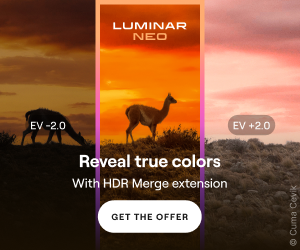DSLRs are a dying breed – 3rd Gen Cameras are the Future
“‘To take an interesting photo, some may choose to carry around a lot of metal and glass and mirrors and silicon. I choose to carry around less metal and glass and silicon. Oh, and no mirrors.’ – Me, quoting myself.” – Trey Ratcliff
Interview about the Sony NEX vs. Nikon in July of 2013
I know the update above has been a controversial decision, so Frederick Van Johnson, host of This Week in Photo, wanted to get me into this interview. Now, here’s a cool thing. If you go to This Link For the Interview, you can scrub forwards and back in the video until you see the question you want answered. Man, it is a long interview, but everything you ever wanted to know is in there! 🙂
Update – the Transitions is Complete
In July of 2013, I decided to switch and stop using DSLRs as my main weapon. To see more, come read “Hello Sony. Goodbye Nikon.”
No More DSLR Equipment for me – Trey Ratcliff
I can’t picture myself investing any more money in DSLR bodies and lenses. The new Nikon D4 that is coming out? Not interested.
3rd Gen Cameras are already here, and they will only get better according to all the laws of size and speed we’ve come to know and love.
What are 3rd Gen Cameras?
These are the new line of cameras that don’t use the 20th century technology of a mechanical mirror inside that flips up and down between photos. In a few years, we’ll all look back and smile, having fond memories of using these Da Vinci-esque mechanical devices. Charts of how cameras used to work with their flipping innards will look like some of Leonardo’s unrealized steampunk inventions.
Example Camera – The Sony NEX-7
I’ve recently reviewed a mirrorless camera I bought and really like – see my Sony NEX-7 Review.
Video: Watch this video below by Scoble, and jump ahead to 35:25 to see me talk about this new generation of cameras…
Naming: Mirrorless = Horseless Buggy
Some people have called this evolution “mirrorless” cameras. In my judgment, that is a ridiculous name. You don’t name a category of technology by what it is not. I suppose we did use to call an “automobile” a “horseless buggy,” but now we look back on that quaint term and laugh. So, of course we will not call these cameras “mirrorless” for long.
but now we look back on that quaint term and laugh. So, of course we will not call these cameras “mirrorless” for long.
And so the term “3rd Gen Cameras” is much better for this new phase of digital photography. It also encompasses the other nonsensical names out there like “Micro four-thirds” and “EVIL” monikers. Gearheads talk too much about the tech, and it simply confuses the common man. The “3rd” bit pays homage to the first generation – those innovative but weak first forays into digital. It also puts all the current DSLRs into the “2nd Generation Cameras,” since that’s when digital photography really got its legs under it. Heck, even most of the old-school film curmudgeons have crossed the Rubicon. To think that DSLRs with gesticulating mirrors and spinning gears are the future is to have one’s head in the sand.
The Pain of Choice
Look, I hate to say it! I’ve spent loads of money on DSLRs and lenses for my Nikon. I’m not going to be using any of it in five years.
This is why the first decision is always a big one. Canon or Nikon. I don’t really get into that argument. But, I do agree that once you commit to one, you’ll be buying a lot of lenses and just swapping out the body. That’s why that first decision is so key — and it is the reason that I won’t buy any more Nikon bodies or lenses — because I won’t be using any of them in the future.
If you’re not familiar with these 3rd Gen Cameras, you may ask, “Why can’t I use my current lenses on these new camera bodies?” The answer is because those lenses are designed for bodies with a mirror that flips up and down. Those bodies need to be _extra-thick_ to make room for that medieval reflective trapdoor. So, your current lenses focus the light too deep for the new supermodel-thin 3rd gen cameras. Yes, there are converters that let you use them, but it defeats the purpose and advantages of having an ultra-small flexible lens system.
Caption: I didn’t use a DSLR to get this. In fact, in looking at this site at StuckInCustoms.com , it may be hard to know which images I got with a DSLR and which ones I didn’t.
I won’t go into all the tech about these cameras, since this is an article about the trend rather than the finer points of the tech. If you want to talk tech and learn more, head over to one of the best sites on the net for learning all this stuff, CameraLabs.com. It’s run by the brilliant Gordon Laing, and he is one of the world’s foremost experts on this stuff. Plus, he creates amazing camera reviews and everything — written and video. Think of it as Top Gear for cameras!
But, look – it’s not all roses. Let’s talk about some disadvantages before we talk about the advantages. I’d like to think I’m pretty objective about it. By the way, Nikon doesn’t pay me or anything. Neither does the camera industry, whatever that is. You can make the case that Best Buy is in cahoots with TV manufacturers to “hype-up” 3D TV just to sell more TVs… or to make people feel like they really need to own a 3D TV. In reality, most of us know that is just marketing nonsense and not necessarily the future of all TVs (maybe just a strain of them).
Disadvantages of 3rd Gen Cameras (note: all will be overcome with time and iterations)
Sensor Size: You can’t quite get “Full Frame” sensors yet, like those available on the more expensive DSLRs. The current 3rd Gen Cameras, like the Nikon V1, will have a cropped sensor. What this means, in the case of the V1, is that the 10-30mm lens will actually be 27mm to 81mm. So, that’s not the end of the world, but something to consider. *Most* DSLR users are currently on cropped sensors, by the way. Only the high-end pros use full-frame sensor DSLRs.
Gordon Laing from CameraLabs.com chimes in: Sensor size. Most mirror-less ILCs have smaller sensors than pro DSLRs. The exception is the super-expensive Leica M9 which does squeeze a 36x24mm full-frame sensor into a relatively small, mirrorless body, but the rest are smaller than full-frame.
Of these, the largest are the APS-C sensors deployed in Sony’s NEX and Samsung’s NX ranges. These are the same size as most DSLRs, including Nikon’s DX range. After this come Micro Four Thirds models from Panasonic and Olympus, followed by Nikon’s CX format in the J1 and V1, and below that the Pentax Q. As the sensor gets smaller, it typically becomes less sensitive to light and easier to saturate – so less dynamic range and more noise. It also typically means a bigger depth of field, which is no good if you like your out of focus bokeh effects. But on the upside, the smaller, the sensor, the smaller the lens.
Of all this, the important thing is to remember a Sony NEX or Samsung NX has the same sensor size as a Canon APS-C or Nikon DX body.
So, for the vast majority of DSLR users, this is not even a consideration, as they are used to these sensor sizes.
For the high-end pro DSLR users that want the equivalent full frame sensor, well they will only need to wait a little while. Maybe, like me, you already have good enough equipment to wait until those full-frame sensors are on the 3rd gen cameras.
Now, the current 3rd Gen Cameras have 10+ megapixel cameras. It’s not full-frame, but you’re certainly not skimping on image resolution. I know sometimes beginners get these things confused (frame size vs. resolution), so, don’t worry about that.
Gordon Laing from CameraLabs.com chimes in: Resolution. Be careful here, as some ILCs have the same or even higher resolutions as DSLRs. The Nikon 1 may only be 10 Mpixel, but Panasonic have a 16 Mpixel micro four thirds sensor, and Sony uses 16 and even 24 Mpixel sensors in its latest NEX models. So resolution is comparable to DSLRs.
BTW, I can say this with certainty: a full frame sensor will not necessarily give you a better photo. I can show you hundreds of thousands of amazing photos from beginner to advanced photographers that are not full-frame sensors. Anyway, don’t complain. Just wait — it’s coming – obviously.
Gear-heads will really give me a hard time about this. Let them. Most fully-formed artists know that the goal is to create an _interesting image_, and that has little to do with sensor size and resolution.

Caption: I took this photo with my Nikon D3X, but I could have captured the exact same image with the Sony A77, for example. There is nothing about this image that required a DSLR.
No Optical Viewfinder: This is a good one. The path to getting around this disadvantage is a tricky one, filled with misconceptions and habits/baggage.
Here’s the thing. I, like you, am used to looking through the optical viewfinder. In case you don’t know what I’m talking about, this is when you peer through little window on top, and the light you see is reflected off a mirror. So, you’re seeing what is really there – real-time.
Many new 3rd Gen Cameras also have a viewfinder window up there (sometimes as an attachment), but it is an electronic viewfinder. That means you’re seeing a little LCD display at extremely high resolution.
Many DSLR people have an irrational fear of this based on lousy, slow, laggy LCD “live” displays on current DSLRs. I agree! But this is not a fair comparison because it uses a different rendering tech than the 3rd Gen Cameras. These new cameras have very y fast LCD displays. It’s as real-time as real-time. You may see some slowdowns and tearing during panning, but those disadvantages will be overcome soon enough.
And, remember, you don’t have to hold out the camera in front of you to see the back display like a tourist at Trevi Fountain. You can still pin the top of the camera to your eye, old-school, and get a nice little dark, framed, area for taking your photo.
So, it will actually be kind of awesome — you know, like those binoculars that Luke used at the beginning of The Empire Strikes Back to see the droid. You can have all kinds of read-outs a HUD information.
Hardcore action-photographers (which is a small percentage, btw) may choose to stick with DSLRs until the electronic viewfinder gets even faster. But that won’t be much longer.
You Won’t “Look” like a pro: Imagine showing up to a paid gig with a little camera. Won’t that be a little embarrassing? Yes, I suppose. But, if you have a killer portfolio, who cares what people think? Ideally, clients will chose you based on your portfolio, not on the size of your camera.

Caption: This Smithsonian photo was taken with very early digital technology — many years ago with the Nikon D70 – a camera with arguably less functionality and features than this first wave of 3rd Gen Cameras.
Advantages:
Scary FPS: Do you know how many frames per second you can shoot on these 3rd Generation Cameras? OMG. I know I sound like a teenage girl when I use that acronym, but I kind of feel like one.
Of course, the reason they can take so many frames per second is because you don’t have this old mirror flipping up and down all the time. The Nikon V1 can do 10 FPS with autofocus or 60 FPS (!!!) with fixed focus, and that’s now in the beginning of 2012. Just wait for the end of 2012! I used one of these for a few weeks from BorrowLenses.com.
And, for those sports photographers that really need the action, maybe this will outweigh the optical viewfinder situation above. These cameras can buffer a lot of frames before you first push the shutter button. So, that means you’ll get a bunch of extra frames before and after that decisive moment.
Of course, this changes post-processing a bit more… you’ll just spend more time in Lightroom finding the best 1 image out of 200 instead of the best 1 out of 20. But, to me, this is a good problem to have! Maybe it’s just me, but I love hanging out in Lightroom, drinking good tea or coffee, and flipping through the day’s shots to find my favorites. Good times!
Size: 3rd Generation DSLRs are smaller, thinner, and lighter. So are the lenses. A possible disadvantage of this is you won’t look like such a stud anymore in front of clients. Anyway, I won’t say any more about this topic. Smaller is better. There’s nothing noble about carrying around a bunch of heavy equipment.
Cleaning: Since the mirror doesn’t flip up and down any more, you’re not flinging a bunch of dust and junk around the inside of that barn. After each trip I take, the sensor on my D3X and D3S needs a good old-fashioned cleaning. I look forward to the day when I don’t have to do that any more. Call me lazy.
Nikon and Canon (and big magazines) won’t tell you what I am telling you
Why? They want to keep selling DSLR bodies and lenses. It’s not a conspiracy or anything – it is just good business.
Also, big camera manufacturers are all in cahoots with magazines to continue to sell products. Magazines will continue to talk about them too, since their advertising is the lifeblood of the magazine. I have a longer article on that topic: “Stop Advertising in Magazines – Head West to the Web” – enjoy!
Summary
Personally, I’m not going to buy any more DLSR bodies or lenses. I’m waiting on the descendants of this first phase of 3rd Gen Cameras. Even though you can make a good case for great cameras like the Sony A77, the new lines of Nikons, Panasonics, etc etc — I want to wait for a few more iterations — but I won’t be waiting long.
3rd Gen Cameras are the clear future category for digital photography. Objectively, these cameras have more advantages than disadvantages. As Moore’s law clicks along, the disadvantages will dissipate like fog in the sunrise.
Final Note: The below was taken with…. drumroll… the mirrorless camera (the Sony A7RII)! For more, see my my gear..






